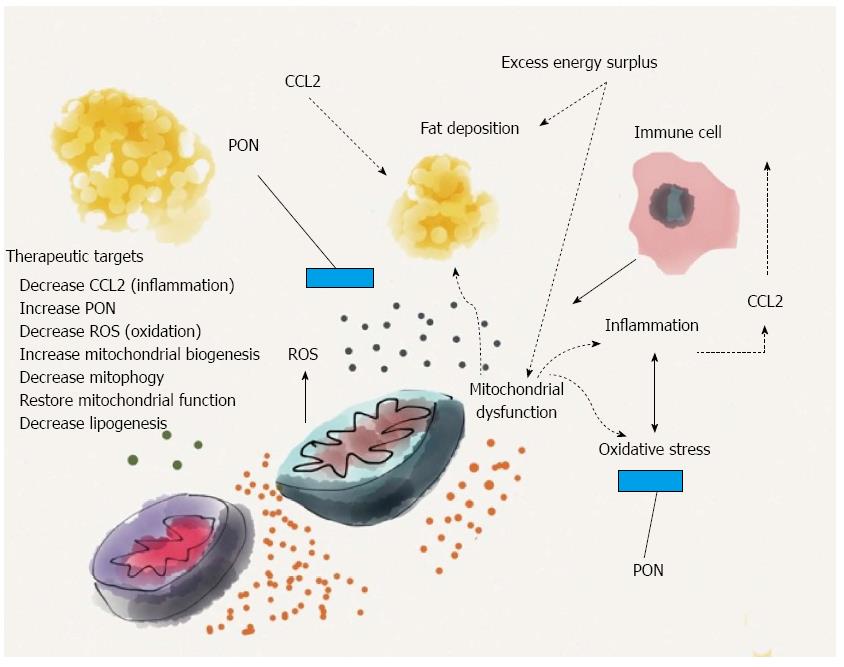Copyright
©The Author(s) 2015.
World J Gastroenterol. Mar 14, 2015; 21(10): 2875-2882
Published online Mar 14, 2015. doi: 10.3748/wjg.v21.i10.2875
Published online Mar 14, 2015. doi: 10.3748/wjg.v21.i10.2875
Figure 1 Several factors, including the excess energy surplus, inflammation and oxidation, are responsible for the deposition of fat in the liver.
Chemokine (C-C motif) ligand 2 (CCL2) affects, either directly or through the migration of immune cells, the mitochondrial function. The net result is a higher production of reactive oxygen species (ROS), which is partially attenuated by the action of paraoxonases (PON). Experimental evidence suggests that both molecules are inversely interrelated in the regulation of hepatic inflammation, fat deposition and mitochondrial function. The underlying mechanisms may indicate an alternative approach in the search for therapeutic targets.
- Citation: Camps J, Joven J. Chemokine ligand 2 and paraoxonase-1 in non-alcoholic fatty liver disease: The search for alternative causative factors. World J Gastroenterol 2015; 21(10): 2875-2882
- URL: https://www.wjgnet.com/1007-9327/full/v21/i10/2875.htm
- DOI: https://dx.doi.org/10.3748/wjg.v21.i10.2875









